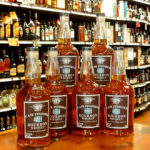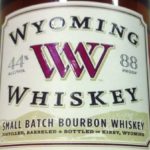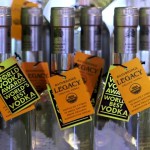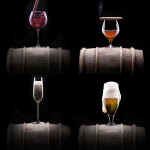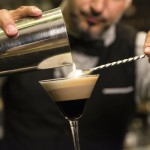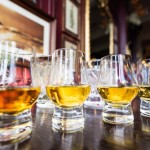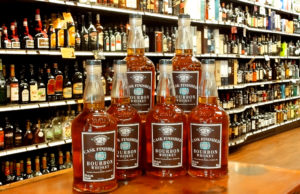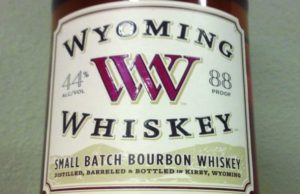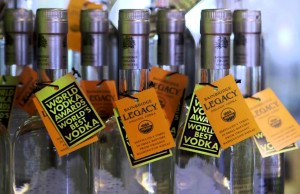Blue Run Distilling Company: Distilling Spirits the Old Way
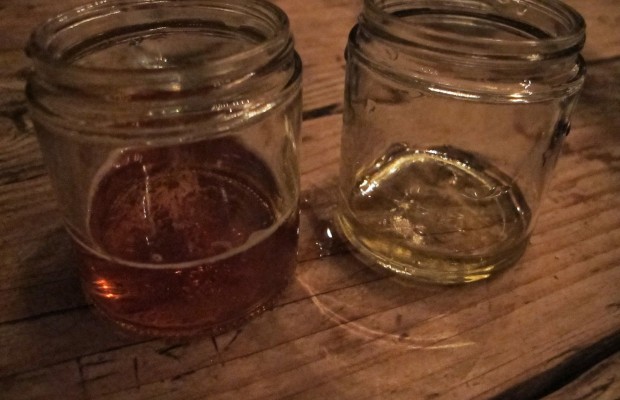
Blue Run Distilling Company was born from a friendly conversation over cocktails. By 2010, the distillery had become one of the few ones in the country that focuses on handcrafting small-batch spirits using old techniques and all natural ingredients.
Lee Medoff, Head Distiller at Bull Run Distilling Company, was kind enough to answer some questions about their production techniques and some of their unique products.
QUESTION: You’re unique in that asides from distilling products, you also have your tasting room and retail shop so visitors can see how products are made, and then take some home. Can you tell us a bit about the building, the production tour and what else can the visitors experience when they get there?
LEE MEDOFF: One of the advantages of having a distillery in Oregon is that with our State License we automatically can have up to six tasting/retail locations. Bull Run Distillery (BRD) is located in a high-density area near two other craft distilleries, several breweries as well as many bars and restaurants all within easy walking distance, so from inception building out a retail store within the Distillery building was a priority. The retail store is our public front and allows us to sample customers on our product and have them learn about the distillery.
All of our spirits are available for sampling which include not only our regular distributed whiskies, rums and vodka, but various small lot spirits that due to their small production and experimental nature are sold exclusively at the BRD retail store. Depending on the season consumers, can always expect to find something new and limited on the shelf. Aside from hosting tastings of our spirits BRD offers tours of the production area. This is an opportunity for customers to get a peek behind the scenes on how and why we make our spirits.
A typical tour begins with an overview of the craft distilling industry in general and what is happening in Oregon in particular and where BRD fits into the scene. From there we proceed to the fermentation and distillation area where the process of distillation is explained and how individual spirits are made. The tour ends with a discussion on the importance of barrel aging and answering any further questions. This is also an opportunity fro BRD to showcase some of our ongoing experiments and potential new spirits.
QUESTION: Can you tell us where the name of the distillery came from and the importance of that connection?
LM: The name of the distillery references the Bull Run Watershed that feeds the City of Portland. The Bull Run reservoir rests in the foothills of the Cascades and has been a Federally Protected area since 1904. The water is about as pure and untreated as you can get. Water is an important aspect of spirits. Water is used to cut the spirit down to barrel and eventually bottle strength.
Water shouldn’t contribute aroma or flavor but can deliver a textural quality. The Bull Run water is very soft water and contributes a smooth, creamier character than found with hard, calcified water. We are fortunate to have such a unique unadulterated water source to use with our spirits.
QUESTION: You have a passion for preserving old traditions of making spirits. How does that work when mixed with modern production techniques and what’s the benefit of marrying both things?
LM: Fortunately, the act of distillation hasn’t changed in centuries. It may have become more efficient and reliable, but there is still some one tending to the ferments, the cuts, years of maturation and blending. It is exhilarating for us at Bull Run to be a part of the long history of distilling in America. Especially the history of whiskey making that started in New England traveled down the Ohio River Valley and has now run up against the Pacific shores.
Being part of that tradition gives us a reference point and a context for what we do but because of our geography we are not bound to anything. Embracing what we have here in the northwest rather than trying to conform creates variety and, in the long run, a tradition all are own.
QUESTION: How is barrel aged vodka different to “traditional” vodka?
LM: Barrel aged vodka, Starka, has a long tradition in Russia, Poland, and the Baltics. There are many colorful stories surrounding that history, but because spirits are so stable, they don’t age in the bottle like wine or beer, one of the few ways to change or enhance the spirit is through barrel aging. Depending on the type of barrel and what may have been stored in the barrel previously will greatly alter the original spirit. Expect greater complexity, smoother taste, richer aromas as well as color.
The fun aspect of the project was all in the various barrels used and then blending. We eventually settled on Vodka that had been aged in Oregon Pinot Noir barrels. When we were looking to expand our original Medoyeff Vodka line, it made sense for us to make a Starka since barrel aging and finishing is what we primarily do with all the spirits we make at Bull Run. Not only is it radically different from the mass of flavored vodkas already on the market but is an extension and new take on an already existing style.
QUESTION: You make traditional Oregon whiskey, a pretty unique choice when you consider most distilleries focus on Scotch or Bourbon. Why the choice and what makes your whiskey different?
LM: I hope to be making “traditional” Oregon whiskey! The industry is still pretty young, but as I mentioned earlier, it is great to be a part of the American whiskey-making tradition but we are not bound to it. Our whiskey is made from unpeated 100% malted barley. The logic comes from my experience as a brewer where all the great ales in the Northwest are made from malted barley.
It seemed a natural choice to use what was available and to have that direct connection to the already popular and established brewing culture. Eighty percent of the whiskey is matured in new American Oak, and 20 percent is matured in used American Oak. This will allow ample stock for blending purposes. There is also a more select project with the malt whiskey aging in exclusively in Oregon Oak.

